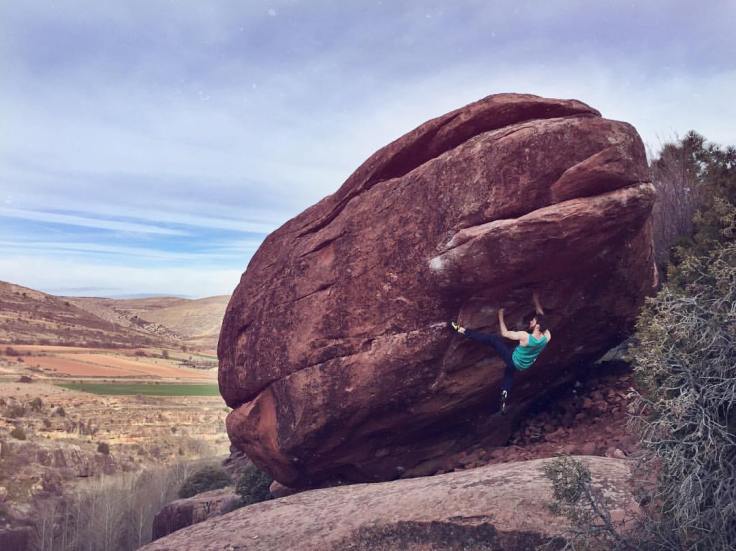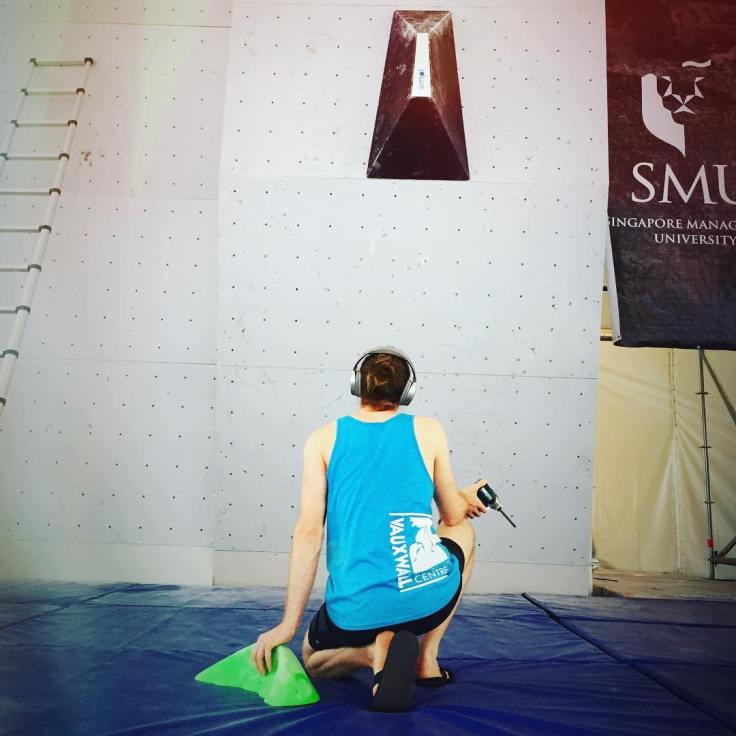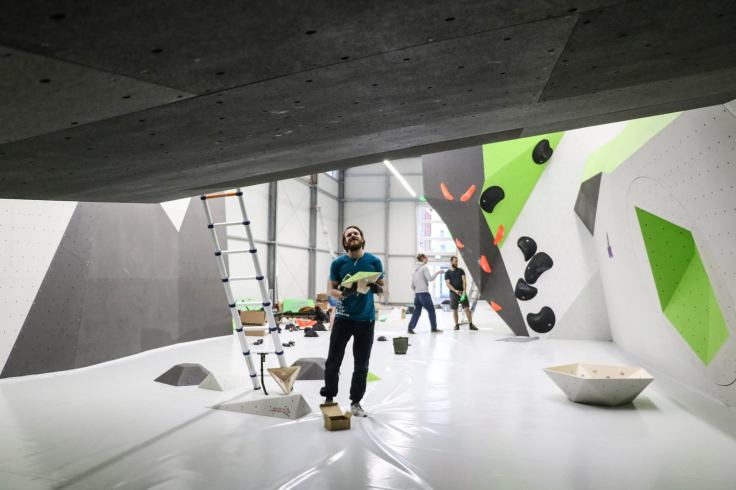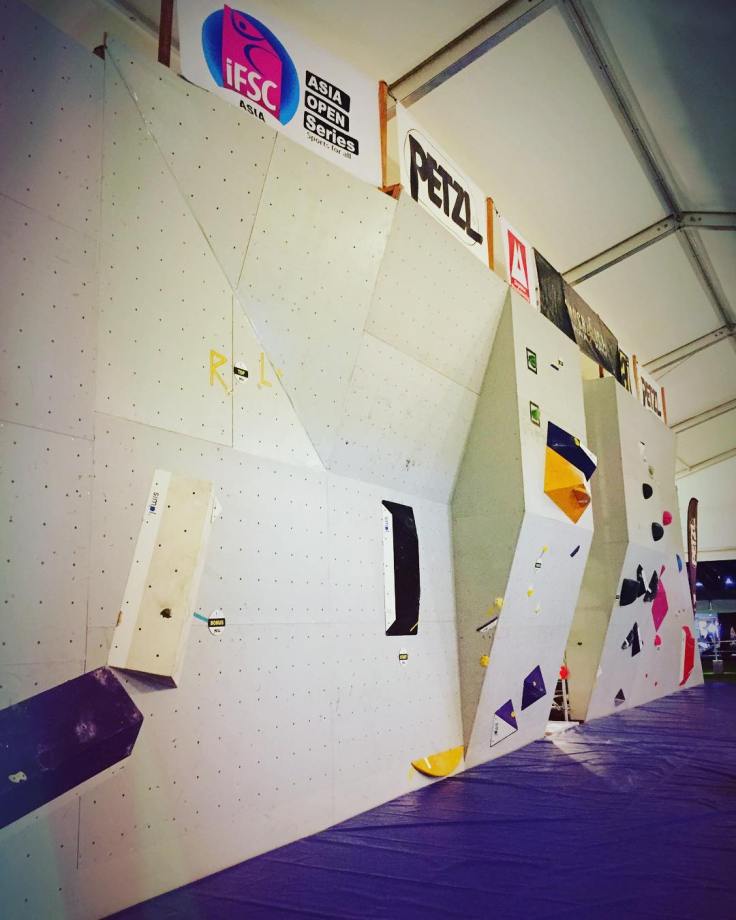Gravical 2018 promises to pack a punch as Hamburg-based guest-routesetter, Tobias Diedler, looks to wow the crowd with some “spicy but delicious” routes. TBP decided to have a chat with the guest-routesetter to find out more about his climbing philosophy, methods of routesetting and words of advice for competitors.
- Have you been to Singapore before or anywhere else in Southeast Asia?
This will be my first experience on Asian ground. I’m looking forward to absorbing Singapore´s culture: The way you guys think, act and communicate with each other. Your history, art and architecture. Your sense of humor, taste and aesthetics. And of course, to get a glimpse of your vibrant climbing scene.
- What type of philosophy do you adopt in your training and climbing?
We are all human first, movers second and only then are we specialists. Climbing is a sport, it is a specialization. To live out this specialization in a healthy and successful way, we should understand climbing as a training system that can improve us as movers or even as human beings by learning about our individual physical and psychological states. On the other hand we should keep in mind that climbing per se doesn’t offer enough ingredients to satisfy our hunger as movers in a holistic way. I try to fully adopt this idea by training in a structured way and listening to the feedback that every session delivers. Are my joints working with a full range of motion? Do I have any pains or aches? Are there any specific deficits or other themes I need to address?

My first approach to designing a training plan would be to assess specific goals that can be achieved short or long term and how much time can be invested in training for climbing. Personally, I usually set myself a couple of objectives for each year and try to work toward them. A training cycle can last eight weeks with different intensities and alternating weekly schedules. The training content can vary according to the wanted outcome. If I am training for an upcoming rock climbing trip the focus would be more on finger strength as opposed to coordination and parkour skills and a specific endurance needed for comps on plastic.
Route setting for a few days in a row presents yet another stress on the body and doing this without preparing for it properly can take a toll. Lifting heavy crates, big volumes and climbing ladders all day followed by testing each problem can seriously rock you down. Therefore I try to do a combination of general fitness and antagonist training.
Rest is another topic that is highly underestimated. Especially when getting older, rest and enough sleep are just as important as weighted pull ups or a finger board or campus board session in order to make gains and become stronger.

- Could you characterize your style of route setting in a few words (or maybe more than a few if you would like!)?
My creativity and route setting is constantly evolving and the style I like to set changes from time to time. Generally, I want every boulder I set to have a few key components: Character, some kind of emotional moment and visual aesthetics. In order for a boulder to have character it needs to leave an impression on the climber, be it a fantastic or an awkward one. Something that might cause you to ponder over the next day. The emotions evoked in a climber can be manifold: Fear, overcoming or joy, to name a few. After a long power-endurance battle I might offer a top hold that allows the climber to safely arrive at the top with a rewarding ´king-of-the-world-feeling´. A small, mean crimp that you might not be able to match and you might fall off of the very last moment produces frustration and disappointment. This is something I keep in mind especially for commercial route setting. When setting for comps the moves can be much riskier in order to ensure a separation in the field. Nowadays, climbers taking part in competitions are expected not only to have splendid technique and all the other physical attributes required but also a strong mental game. After considering the responsibility of the safety of the climber, the quirkiness and innovation and an emotional response, an aesthetic appeal would be the last big factor that makes a climb great. To me route-setting is an art-form which always begins with a blank canvas. To play with angles, matching hold types and colors to create a spectacular visual experience might draw a climber into giving it a try or not. I like to take a whole wall shape or even room into consideration when putting up holds and volumes. This will contribute to the perception of the gym as a whole. Do I feel comfortable? Do I feel inspired? Am I psyched?

- Top 3 boulderers in your opinion and why? (The sky’s the limit for this one.)
This is a tough one because there are so many inspiring boulderers nowadays. Tomoa Narasaki´s coordination skills, the commitment of Janja Garnbret and the endless repertoire of unique moves that Adam Ondra performs in his projects are one of a kind. There are also some lesser known climbers such as Christoph Rauch, Isabelle Faus or Ryuichi Murai who crush it outside. This is just to name a few of the current wave of upcoming, young top boulderers and it is easy to forget someone like Fred Nicole or Dave Graham and many others who were pioneers of the sport by putting up so many first ascents. Perhaps it is better to talk about it over a cup of coffee since I could fill hours talking about my favorite athletes.
- Do you have any tips for participants of the upcoming Gravical 2018 in terms of pre-comp preparation and during-comp performance?
From my own competition climbing background, I can tell you that I would perform best when I was relaxed, calm and focused on my own performance and not on anyone else. And vice versa I had my worst competitions when I took it too seriously – performance and training wise. Fun is key!
- Do you have a message to climbers in Singapore and abroad who are looking forward to Gravical 2018?
We will give our absolute best to create an awesome comp for you guys and I will make sure that the problems you will be confronted by will be spicy but also delicious! I am hoping to put up some of my favorite modern climbing moves and styles and surprise you with some unconventional beta. Let’s get sweaty palms!



Leave a comment